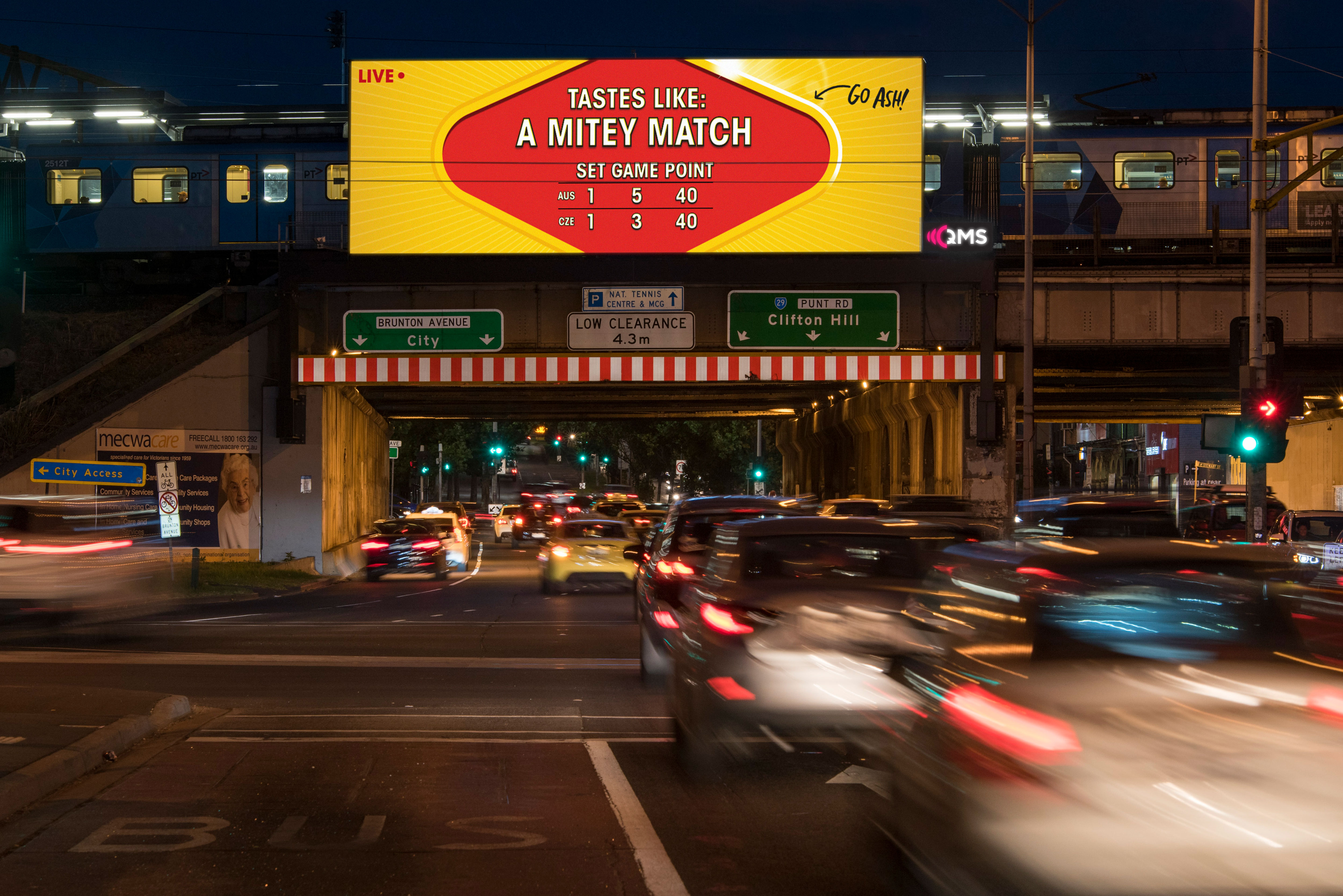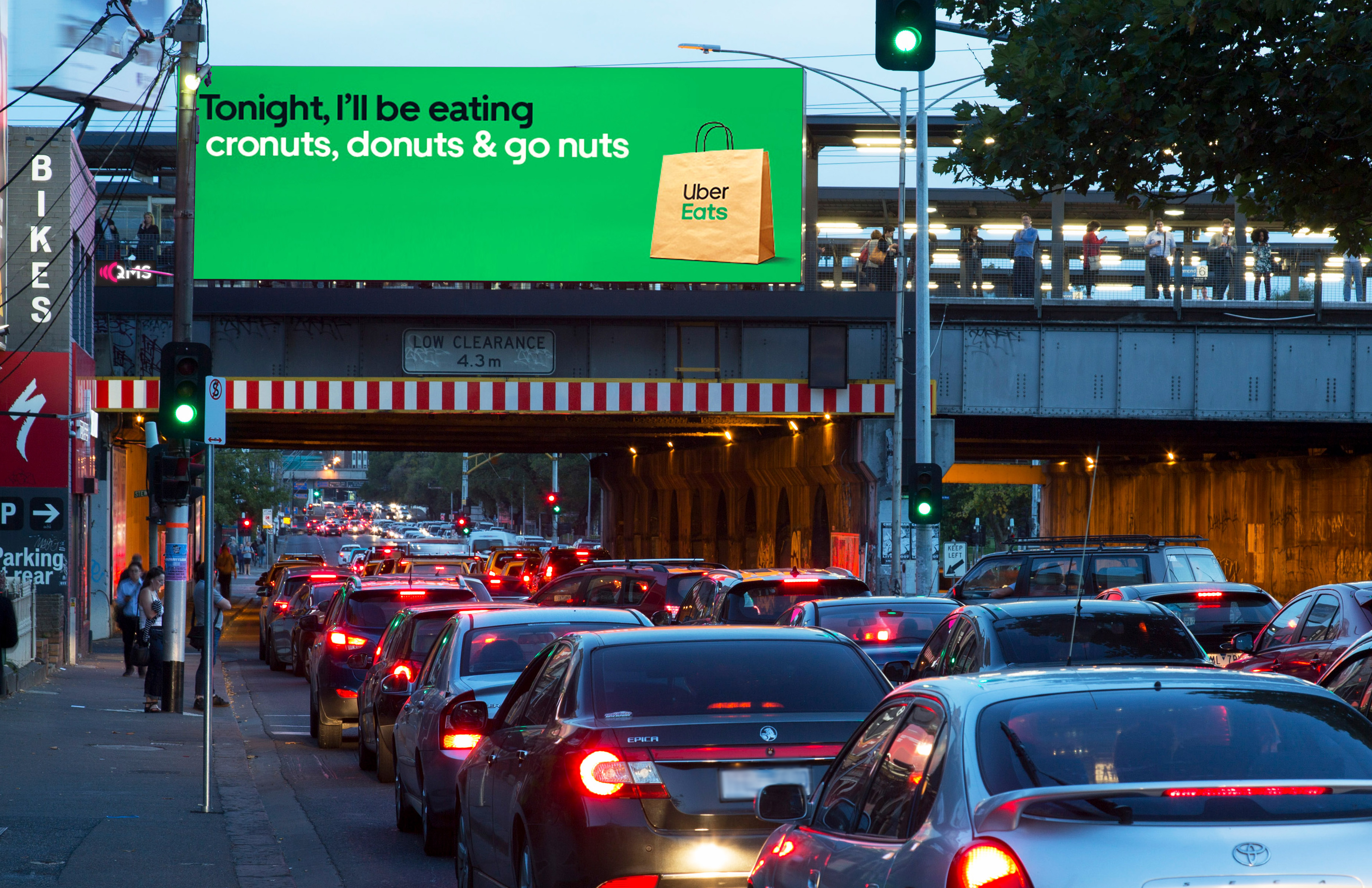The butterfly effect: Five ways digital out of home trumps static – and why smart marketers use DOOH for more than awareness building

As digital has crept into every aspect of our lives, digital technology has transformed OOH.
If static out of home was the caterpillar, digital is the butterfly. It’s better in just about every way, QMS’ Chief Strategy Officer Christian Zavecz writes. Through five research-backed elements – impact, precision, cut-through, amplification and accountability – DOOH is flipping misconceptions about the channel on their head.
Everyone is aware of the classic caterpillar to butterfly metaphor, but there’s a version of it playing out right now in media that marketers must be aware of. It’s critical if they hope to maximise ROI, capitalise on engagement and ultimately land a competitive advantage in the war for attention that’s raging in this increasingly fractured post-pandemic landscape.
The raw, simple and very useful caterpillar in this story is static out of home (OOH) – something that has served us all well and contributed to decades of successful marketing results. But static is only the beginning of OOH. As digital has crept into every aspect of our lives, digital technology has transformed OOH.
A rapidly evolved marketing environment and a total shift in communication demands has overshadowed the raw simplicity of static. Marketers need to be smart, move confidently, adapt quickly and measure constantly. Action can’t take place over days – opportunities are killed in that time. It has to take place in hours. It’s a balance between time, accuracy, targeting and verification. It’s just not possible to be static and meet the very real needs of marketers vying to meet and exceed consumer demand.
The caterpillar has had to make way for the butterfly. And static OOH is stepping to the side to allow digital OOH to fly. It’s the butterfly. Not just because it’s prettier and more evolved, but because its digital evolution has created some formidable attributes that take OOH communication to another level. Caterpillar to butterfly is the story of good to great, we’re no different: we’re not interested in offering marketers a good result, we want to deliver a great one.

Static OOH is stepping to the side to allow digital OOH to fly.
There are five key elements that reflect the power of DOOH against the limitations of static. They also assure marketers, at a minimum, a great campaign provided they are willing to leverage the full capacity of DOOH with their creative. These five elements represent proven facts based on research and are tangible influences on any effective campaign, considering the medium, message and moment. They deliver the DOOH difference.
- Impact
- The recent industry Neuro study has proven there is, on average, a 63 per cent greater neuro impact with a digital sign. Additional testing has also uncovered that DOOH can build new information into a campaign, where static’s strength is all about reminding the consumer of existing knowledge.
- Precision
- A robust platform of actionable data enables a much more effective connection with the audience. It’s not just targeted, it’s dynamic, flexible and immediate so the greatest precision is inevitable.
- Cut-through
- Testing has shown creative is 38 per cent more effective when it evolves. It has also shown that creative is 19 per cent more effective when the message is contextually relevant.
- Amplification
- Global studies have continued to highlight the higher response (+ 48 per cent) to other digital channels like mobile when using DOOH, making it a potent medium in any omnichannel strategy.
- Accountability
- A dedicated focus to measurement has delivered multiple levels of responsible reporting like omnichannel attribution, creative performance, brand health and campaign evaluation. This provides the confidence to offer a 100 per cent guarantee on performance.
This difference in digital is not superficial. It changes the very nature of what OOH can deliver to consumers and marketers. The traditional perception of OOH as an awareness medium needs to be reconsidered. DOOH has the ability to be a strong channel for consideration and conversion – as well as awareness. Digital technology applied to OOH has literally turned historical perception on its head.
I say all this because marketers need to understand the gap that has naturally formed between static and digital OOH. Expecting static to deliver to the level of DOOH is simply not feasible, and it’s not sensible to use DOOH only to play the limited role that static has played in the past. It means missing the very real opportunity to let your next campaign really take off. Static was the invention, but DOOH is the innovation. No-one mistakes a caterpillar for a butterfly.
